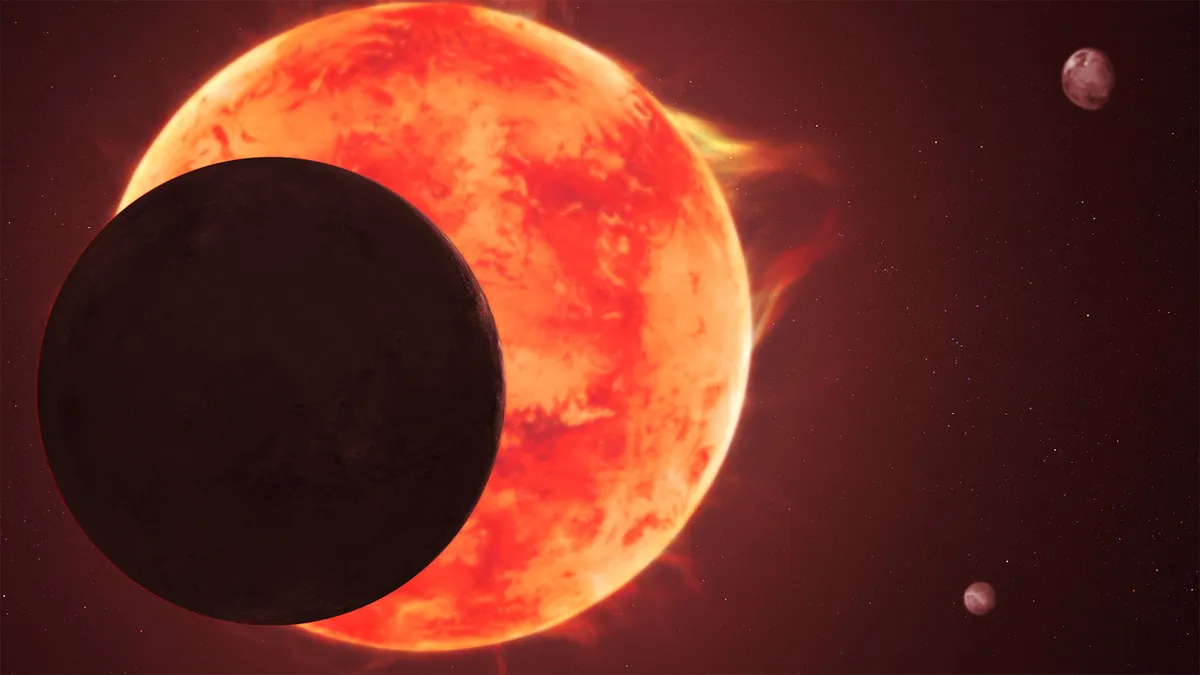
In a disappointing turn of events for astrobiology enthusiasts, the James Webb Space Telescope (JWST) has found no evidence of an Earth-like atmosphere on TRAPPIST-1d, the third planet orbiting the red dwarf star TRAPPIST-1. This discovery raises questions about the potential for habitable planets within this intriguing star system. However, it’s important to note that there are still four other planets in the TRAPPIST-1 system that remain candidates for habitability, with at least two or three of them located within the habitable zone where conditions may allow for liquid water to exist, given the presence of an atmosphere capable of retaining heat.
Prior to the JWST's recent findings, astronomers had already ruled out the two innermost planets, TRAPPIST-1b and TRAPPIST-1c, as having atmospheres. Now, TRAPPIST-1d joins this list. Caroline Piaulet-Ghorayeb, a researcher at the University of Chicago and the Trottier Institute for Research on Exoplanets (IREx) at Université de Montréal, emphasized the importance of these findings in a recent statement. "Ultimately, we want to know if something like the environment we enjoy on Earth can exist elsewhere, and under what conditions," she stated. Unfortunately, this latest data means we must exclude TRAPPIST-1d as a potential twin or cousin to Earth.
The JWST employs a technique called transmission spectroscopy to analyze the atmospheres of exoplanets. This method involves observing the light from a star as it passes through a planet’s atmosphere during a transit. Although the JWST cannot directly observe the silhouette of the transiting planet, it can detect the absorption of light by various molecules within the atmosphere. However, despite utilizing the JWST's advanced Near-Infrared Spectrometer (NIRSpec), the research team led by Piaulet-Ghorayeb found no signs of key atmospheric components such as water, methane, or carbon dioxide, all of which are vital for maintaining a warm environment suitable for liquid water.
There are several hypotheses as to why TRAPPIST-1d's atmosphere remains undetected. Piaulet-Ghorayeb suggested that it could possess an extremely thin atmosphere, akin to that of Mars, making it difficult to identify. Alternatively, the planet might be enveloped in thick, high-altitude clouds that obscure specific atmospheric signatures, similar to conditions on Venus. Lastly, it is possible that TRAPPIST-1d is a barren rock devoid of any atmosphere.
The TRAPPIST-1 planets face significant challenges due to their host star, a red dwarf. While red dwarfs might initially appear benign, they are known for their tumultuous activity, including frequent outbursts of radiation. Such flares can strip away a planet's atmosphere over time. This phenomenon may explain the atmospheric conditions of TRAPPIST-1b, c, and d. Particularly concerning is the fact that TRAPPIST-1d lies on the inner edge of the system's habitable zone, which diminishes its chances of supporting an Earth-like atmosphere.
Despite the setback with TRAPPIST-1d, there is still hope for the remaining planets within the TRAPPIST-1 system. "While we didn’t find a big, bold atmospheric signature for planet d, there is still potential for the outer planets to be holding onto a lot of water and other atmospheric components," Piaulet-Ghorayeb noted. Planets e and f are solidly positioned within the star's nominal habitable zone, while planet g sits on the outer edge similar to Mars in our solar system. Planet h, on the other hand, is likely too cold to support an Earth-like atmosphere.
Investigating the atmospheres of these outer planets is complicated due to their distance from the star, which weakens any spectral signatures that might be detected—potentially beyond the capabilities of the JWST. However, even if all the TRAPPIST-1 planets prove to be inhospitable, there are still numerous other opportunities in the vast cosmos. Red dwarf stars are the most common type in the Milky Way, making up approximately three-quarters of the galaxy's stellar population. There are many other intriguing planets orbiting red dwarfs, such as Teegarden's Star b, LHS 1140b, and Proxima Centauri b. Additionally, the search for rocky planets within the habitable zones of more sun-like stars is ongoing, with the European Space Agency's PLATO mission set to launch in December 2026, further advancing our quest for Earth's potential counterparts.